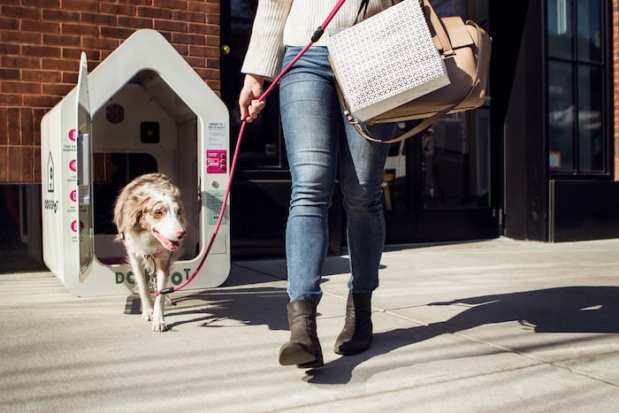Taking Pet-Friendly Into Next-Level Digital With IoT Dog Houses

Some entrepreneurs start companies based on experiences with their own pets. DogSpot Co-Founder and CEO Chelsea Brownridge, for instance, began her company because of her dog Winston. While she likes to get him out of the house as much as possible, there were times when she was going to a place where couldn’t bring him along. The dog would then have to skip out on the trip instead of receiving that extra half-hour of exercise.
DogSpot is “in the business of making places dog-friendly,” Brownridge told PYMNTS in an interview. Many locations, from grocery stores to restaurants and coffee shops, can’t let dogs inside due to health rules. But shoppers don’t always have many safe options when it comes to finding a place to keep their pets. Leaving them in their cars or tying them up can be dangerous, for example. DogSpot seeks to provide an alternative. “We’re really trying to meet people where they’re at,” Brownridge said.
DogSpot offers a high-tech, climate-controlled dog house where the pets can relax while their owners shop, dine or run errands. To start using the service, consumers download the company’s app and enter their data and credit card information. They can then reserve and unlock any nearby house where units are not in use. While most people use the app, Brownridge said consumers can request a radio-frequency identification (RFID) card on the website to unlock one of the company’s houses. DogSpot charges 30 cents per minute, and accepts credit and debit cards for payment.
The Smart Dog House
The houses have air conditioning and heat, which is automatically triggered based on the internal temperature. They also feature webcams that stream to the mobile app, so owners can watch their dogs and the company can watch from headquarters. If a dog is barking, pacing or looking anxious, DogSpot can let the owner know. (The house is also locked for security.) Each session has a maximum time limit of 90 minutes, and there is an eight-hour backup battery in case the power goes out.
The houses can accommodate larger dog breeds such as German Shepherds, Golden Retrievers and Labradors, but can’t fit very large breeds like Mastiffs and Great Danes. “We call it one size fits most,” Brownridge said. Grocery stores are popular with the company, as Brownridge noted that the number of people who visit them daily is “so much higher than a restaurant or coffee shop.”
The Markets
For now, DogSpot is available in markets such as Columbus, Ohio; Kansas City, Missouri; Raleigh, North Carolina; Austin, Texas; and Detroit, Michigan. The company also plans to soon launch in Washington, D.C., Seattle and Baltimore, Maryland. For markets, Brownridge noted that dog ownership spans all demographics, but the company does cater to its fair share of millennials and Baby Boomers. Some people learn about the concept through the dog houses they see at the grocery store, or through media coverage.
The internet of things (IoT) allows DogSpot to keep its houses clean, safe and monitored. The internet connection is critical to delivering the quality of service, safety and cleanliness that customers expect.
In terms of market forces, Brownridge noted that the humanizing of pets is growing. Particularly in cities, people want to include dogs in their daily lives, bringing them along to explore new areas and meet new friends, for example. Consumers, however, may need options to store their pets when they need to use the restroom or grab a bottle of water.
With the help of IoT technology and mobile apps, digital innovators like DogSpot are looking to change the way dog owners experience the world with their pets.
